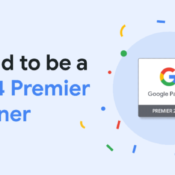/
/
Developing and Evaluating a Digital Strategy Based on the Customer
Anytime that I’m trying to come up with a digital strategy, I like to start by finding out what the client’s goals are. Very commonly we hear, “we want to sell more cars,” and that is an admirable goal. Of course a client wants more sales because if not, they wouldn’t be in business. However, in order to make sales, it is important to come up with a good strategy.
Developing a Digital Strategy
An important part of developing your digital strategy is to think about customer intent or potential customer intent. It is important to try to figure out what message will connect with the person or people you are trying to reach. Is the group you are targeting interested in the latest sale price or would they rather you hit them with an emotional appeal? Truly put yourself in the shoes of your target audience and consider what ad they might want to see, so you can get them engaged.
Aside from customer intent, it is important to consider targeting areas. Where are your customers, from a geographic standpoint, and also from a platform standpoint? Are they on social media often or would they instead be streaming video? Once we can nail some of those things down or at least get a very good starting point we are allowed then to create our campaigns and run them. Then we can run tests to evaluate their performance
How do we Evaluate the Performance of Your Digital Strategy?
Keep in mind, when we started this strategy, the client wanted to sell more cars. One of the ways digital advertising measures their impact on sales is through conversions. That means often clients and the campaigns we develop push for conversions. When we say conversion, we mean that somebody either fills out a form or calls a tracking number. This gives the client a lead on a sale. That is what clients want so often we base a lot of our campaigns off of conversions, or at least we used to.
Why used to? Well, what we are starting to see trend-wise is that there is actually less people converting (i.e. form fills and phone calls). If you try to think about why that is from a user standpoint, it may be that users don’t want to give out their information until they are closer to actually making a purchase (personally, I don’t like to give out my information until I’m actually purchasing something).
So How do we Measure the Value of Digital Beyond the Typical Conversion?
From a tracking standpoint, there are a number of indicators that I like to look at. Using the Google Analytics dashboard, you can determine how many visitors you had to your site, and, more importantly, how are they interacting with that site.
More specifically, that means you can look to see if these visitors are looking at key areas of a dealer’s website like Vehicle Description Pages and Search Result Pages. If people are visiting those areas, we can make a general conclusion that people are getting to the information that they need to see. Then, once we have that, I like to compare that to floor traffic and sales data to try to figure out if we are having a good month and why or why not.
It is very common for a client to come in and immediately want to see sales increase. Like I said before, there is nothing wrong with this because that is a metric of running a good business, but when developing a solid digital strategy, I like to remind people to think about the customer.
Think about what the customer wants when you are developing your ad campaigns, and think about how the customer is interacting with you when you are measuring your campaign’s success. Keep the customer in mind, and you may more easily find the sales targets you’re looking for.
Recent Posts
Mudd Advertising
Let’s leverage!
Mudd Advertising
Politics Schmolitics!
Mudd Advertising
Mudd has been promoted to Google Premier Partner
All Categories
Tags
anonymous website visitor identification
automotive
branding
cable
case study
chevrolet
chevy
data
digital marketing
direct marketing
display
dynamic inventory display
facebook
first party
google
google analytics
google premier partner
internet marketing
local seo
Matthew Moody
media
mobile search
mobile seo
MUDDid
online marketing
online video
organic
organic search
pay per click
political
ppc
promotion
retargeting
search engine marketing
search engine optimization
sem
seo
social advertising
social media
social media marketing
strategy
traditional marketing
traditional media
Volunteer Spotlight
youtube




